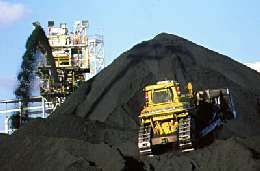IGCC taking some twisted turns…
August 11th, 2010
There’s been change afoot as the facts of the infeasibility of CO2 capture and storage filters up to the higher regions of the cesspool, and as the financing nightmares and high capital costs of IGCC are paraded in public as the Indiana Duke IGCC project moves forward, and as, of course, the DOE’s EIS (here’s the DOE’s project page) for Excelsior Energy’s Mesaba Project drags on and on and on as the agency refuses, thankfully, to issue the Record of Decision on that… and slowly, painfully slowly, the truth about this IGCC pipedream is coming out.
A few telling tidbits, first, that they’ve given up on FutureGen IGCC, YEAAAAAAAAA:
DOE to provide $1B to revamped FutureGen
This study was released last June, which shows that leakage of CO2 is a major problem, and which makes sequestration not feasible:
Long-term Effectiveness and Consequences of Carbon Dioxide Sequestration – Shaffer
Can’t have information like that getting out, so USA Today, of course, plays it with the following headline — DUH, of course critics pan the study — and this is the best they could come up with and it took two months!
Critics question carbon storage study
PSEG S-R applications rejected and withdrawn!
August 6th, 2010
HA! I love it when this happens. Just before National Park Service public hearings (schedule below), PSEG screws up and an application gets tossed back in their face!
I’m representing Stop the Lines against PSEG”s Susquehanna-Roseland transmission project in New Jersey.
PSEG thought they’d be “smart,” and given the length and intensity of process for the federal environmental review of its proposal to cross the federally designated Wild & Scenic Delaware Water Gap with massive transmission…
… they tried to divide the line in half for its News Jersey Dept. of Environmental Protection wetlands application and other DEP applications too.
First the DEP rejected that maneuver, short and sweet, and rejected their wetlands application:
Here’s the meat of it, first the funny part:
… and then, the substantive issue…
So then, PSEG withdraws their other DEP applications:
I love it when that happens… and what great timing. Bring on the National Park Service hearings!
Here’s an Alert from the New Jersey Sierra Club:
Urge the National Park Service to Select the “No Action” Alternative!
The National Park Service will be hosting 3 public meetings to present the Preliminary Alternatives for the Susquehanna-Roseland transmission line as part of its NEPA (National Environmental Policy Act) review for this project. The meetings will consist of an “open house” portion where information will be available and NPS staff can answer questions and a formal “public hearing” portion. The meetings will be held:
Tuesday, August 17
Fernwood Hotel and Resort
US 209 North
Bushkill, PA
Open House: 2:30 p.m. – 4:30 p.m.
Public Hearing: 6:00 p.m. – 9:00 p.m.
Wednesday, August 18, 2010
Stroudsmoor Country Inn – Terraview
North 4th St
Stroudsburg, PA
Open House: 2:30 p.m. – 4:30 p.m.
Public Hearing: 6:00 p.m. – 9:00 p.m.
Thursday, August 19, 2010
Farmstead Golf and Country Club
88 Lawrence Road
Lafayette, NJ
Open House: 2:30 p.m. – 4:30 p.m.
Public Hearing: 6:00 p.m. – 9:00 p.m.
The proposed alternative routes can be viewed here. Click on the “Preliminary Alternatives Newsletter” for details and mapping of the 6 proposed routes.
Please come to these meetings and voice your support for the “No Build Alternative”! If you are unable to attend the hearings, comments can be submitted online here. NPS will accept comments on these alternatives August 8- September 7.
++++++++++++++++++++++++++
And word is getting out:
Opponents of powerline upgrade are happy that project is delayed
BY COLLEEN O’DEA • STAFF WRITER • August 5, 2010
Last week, PSE&G’s second quarter earnings statement disclosed that the utility would not complete work on the eastern half of the line, from Hopatcong through portions of Morris County to Roseland, until 2014 and on the western section to the Delaware Water Gap until 2015.
Read the rest of this entry »
Xcel’s “forward sale agreement”
August 5th, 2010
Xcel is trading a bunch of paper for a bunch of money, 21,850,000 pieces of paper to be precise. How much money is that? Seems to be $469,775,000, or $408,500,000, gross, or $396,245,000 net to Xcel, depending on what numbers you look at, or what they sell at!
What will they do with it? According to the prospectus, and an article written about it:
“Xcel Energy intends to use any net proceeds that it receives upon settlement of the forward sale agreement described above, or from the sale of any shares to the underwriters to cover over-allotments, to repay outstanding commercial paper and make capital contributions to its operating subsidiaries.”
Here’s an article from Marketwatch:
Doesn’t this have the feel that they’re desperate for cash flow? We know they can’t get their construction capital to build the Brookings transmission line, and they’re hot to trot both about PUC ordained rate recovery, which they did not get and their Motion for Reconsideration (PUC Docket 09-1048) went nowhere.
Here’s Seeking Alpha’s Xcel 2Q Earnings Call Transcript!
Seeking Alpha Xcel 2Q Earnings Call Question & Answer
And a choice answer snippet from the Q&A:
Wind developer hush money for wind noise?
August 1st, 2010
Word of today’s NYT article came in over the wire today, and it’s an interesting concept to deal with a very real problem, but not nearly enough!!!
My clients raising noise issues in wind project dockets at the PUC, including the “Public Health Impacts of Wind Turbines” (09-845) have noted, “how will we be compensated for having to live with all this noise?” In our capitalist culture, $$$ is compensation. Offensive projects aren’t shut down, money is offered.
Minnesota Noise Rules don’t take into account ambient noise, they just set standards for noise, a binary limit on certain types of noise.
Minnesota’s legislature acknowledged that people don’t want to live by transmission lines, and enacted “Buy the Farm” (in full, below)which gives landowners facing a transmission line on their property can opt out, and force the utility to buy their full parcel, not just an easement. Why not the same with wind projects?
Here’s the actual waiver that the wind developer is asking them to sign:
And check this sentence, regarding the Compensation which is outlined in “Exhibit C” attached to the agreement:
Exhibit C shall be redacted from the recorded version of this agreement.
It seems to me that for the blanket “right to offend,” the offers reported are way too low, and waivers are one-sided. From the article:
Don’t change the market price? Well, that says there’s a price and that there’s a market. Caithness does not control the market — they’d better get clear on that right quick. I’ would presume that as this becomes more of an issue the price will go up! LET THE MARKET DECIDE!!! I love it when that happens…
+++++++++++++++++++++++++++++++++++++++++++++++++
Minnesota’s “Buy the Farm” law:
Minn. Stat. 216E.12, Subd. 4.Contiguous land.





